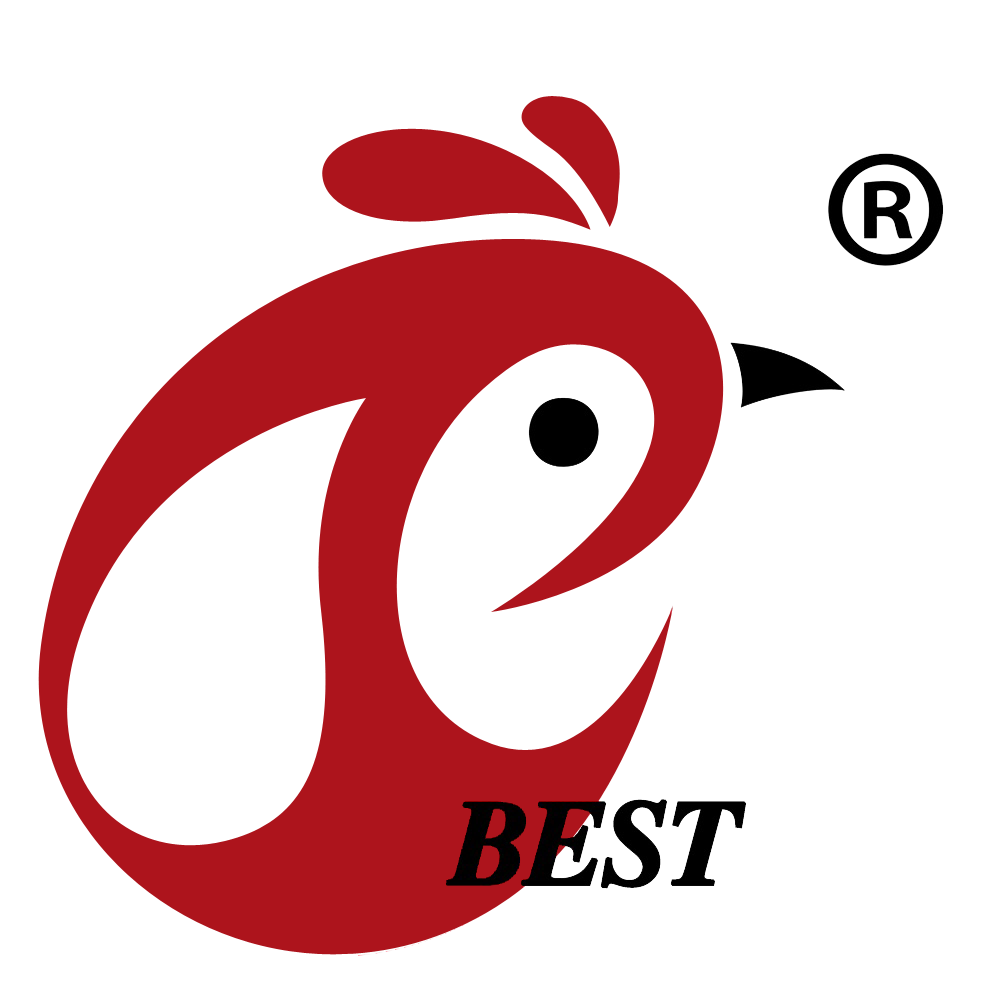
Basic information
3-tier cages are designed to hold three tiers of cages, each of which can hold one or two birds. The cages are typically about four feet high and can be up to 24 feet long. They are often used in poultry farms that raise broilers or layers. 4-tier cages are similar to 3-tier cages, but they have an additional tier of cages, which allows for a higher stocking density. Cages for poultry farm is a housing system which is mostly used for rearing poultry birds and it is suitable for several methods of poultry rearing
Poultry farming is mainly focused on production of eggs and meat and has its efficiency in the kind of housing system in which the birds are being kept. For instance, broilers are basically reared for meat consumption while layers are reared for egg production. In terms of capacity, 3-tier cages can hold up to 300 birds, 4-tier cages can hold up to 400 birds, and 5-tier cages can hold up to 500 birds. The type of birds that can be kept in these cages depends on the size and weight of the birds. Typically, broilers are kept in 3-tier or 4-tier cages, while layers are kept in 5-tier cages. The cage size and layout can also affect the type of birds that can be kept in the cage. 3-tier cages are typically the most affordable option, while 5-tier cages are the most expensive
The overall cost of a cage system also depends on the features and materials used. Some cage systems come with built-in watering and feeding systems, while others do not. The material of the cages can also affect the price, with stainless steel cages typically being more expensive than galvanized steel cages. In terms of maintenance, all three types of cages require regular cleaning and disinfection to maintain a healthy environment for the birds
A part of my company's chicken house design, for reference only

Why is it call 3 tiers 4 tiers 5 tiers cages for poultry farms
The "tiers" in a cage system refer to the number of levels or rows of cages. So, a 3-tier cage system has three levels or rows of cages, a 4-tier cage system have four levels or rows of cages, and so on. The number of tiers in a cage system is usually determined by the amount of space available and the desired stocking density. Cage systems with more tiers can typically house more birds in a smaller space, which can be more efficient in terms of space utilization
In a 3-tier cage system, the cages are typically arranged in three levels, with each level holding a row of cages. In a 4-tier system, the cages are arranged in four levels, and so on. The cages are usually arranged in a way that allows for easy access to the birds for feeding, watering, and cleaning. The height of the cages and the space between them is also important to consider, as it can affect the comfort and health of the birds
Customers part of the poultry growing business benefit from our customised solutions, visiting our page of products to learn more
1. Egg laying chicken rearing system
The one stop shop and solution of turnkey poultry farm project, contact us to give you full solution from the designing of poultry house, layout and quotation of poultry equipment and cages, delivery and installation...
Product description
The 3-tier, 4-tier, and 5-tier cages are types of poultry housing systems that are used to raise broiler chickens. These systems are used in large-scale poultry operations, where the chickens are kept in large numbers in a confined space. The tiers refer to the number of levels or rows of cages in the system. The higher the number of tiers, the more birds the system can accommodate
Advantages
1. They make better use of space
2. They can reduce the cost per bird
3. They can improve worker safety
4. They can improve bird health
5. They can reduce bird stress
6. They can improve worker productivity
7. They can reduce the risk of disease transmission.
8. They can reduce the need for supplemental lighting
9. They can improve egg quality
10. They can reduce noise levels
Features
1. Cage flooring: The surface of the cage where the birds walk and sit. The flooring is designed to be easy to clean and prevent injury to the birds
2. Cage doors: The doors of the cage that are used to access the birds and the inside of the cage. The doors are designed to be easy to open and close, and they should be secure to prevent the birds from escaping.
3. Cage feeders: The mechanism that delivers food to the birds. The feeders is designed to provide the right amount of food to the birds
4. Cage drinkers: The mechanism that delivers water to the birds. The drinkers is designed to provide fresh, clean water and to prevent the birds from becoming wet or dirty
5. Lighting system: The system that provides light to the cage. The lighting system is designed to provide the right amount of light for the birds, and it should be adjustable to meet the birds' needs
6. Ventilation system: The system that provides fresh air to the cage. The ventilation system is designed to keep the air in the cage clean and fresh
7. Nest boxes: The area of the cage where the birds can lay their eggs. The nest boxes is designed to provide a comfortable, private space for the birds to lay their eggs
8. Perches: The area of the cage where the birds can perch and rest. The perches is designed to provide a comfortable place for the birds to rest and preen
9. Air inlets: The openings in the cage that allow air to enter. The air inlets is designed to provide fresh air without letting in too much dust or debris
Maintenance
1. Cleaning: The process of removing dirt, dust, and other debris from surfaces
2. Disinfection: The process of killing bacteria, viruses, and other pathogens on surfaces
3. Lubrication: The process of applying a lubricant to moving parts to reduce friction and wear
4. Inspection: The process of visually examining equipment for signs of wear or damage
5. Repair: The process of fixing or restoring a piece of equipment that is damaged or not working properly
Our services
1. We offer the best poultry equipment which can meet our customers every requirement
2. We have long time and rich experience on the products manufacturing
3. We recommend suitable products based on customer’s availability resources
4. We provide free house design to help customer build well-structured and modern farms
5. We offer training to our customers for those who have no knowledge about poultry business
6. Our poultry equipment’s are made with high and durable materials
Frequently ask questions
Q: How often should the cages be cleaned and disinfected?
A: The cages should be cleaned and disinfected on a regular basis, typically once a week or more frequently if necessary. The frequency of cleaning and disinfection will depend on the type of birds being raised, the climate, and other factors. It is important to follow the manufacturer's recommendations for cleaning and disinfection
Q: How often should the equipment be lubricated?
A: The equipment, such as fans, motors, and other moving parts, should be lubricated on a regular basis, typically once a week
Q: What should be done if a piece of equipment is not working properly?
A: If a piece of equipment is not working properly, it should be inspected to determine the cause of the problem. If the problem is minor, such as a loose connection, it can be fixed. If the problem is more serious, such as a broken part, the equipment should be repaired or replaced
Search
Hot product
 Feed silo systemThe automatic chicken feeding machine takes feed from a central hopper in silo or bin out to feed the birds continuously all day. In place of having to fill the score of separate feeding troughs, the poultry man fills just one silo the hopper and does it just this process once a day. There is also a manpower hopper is the beginning of main feed line. These are the complete set of automatic chicken feeding system are consists of following, the feed tank, feed silos, travelling Hooper, feed dischargeRead more
Feed silo systemThe automatic chicken feeding machine takes feed from a central hopper in silo or bin out to feed the birds continuously all day. In place of having to fill the score of separate feeding troughs, the poultry man fills just one silo the hopper and does it just this process once a day. There is also a manpower hopper is the beginning of main feed line. These are the complete set of automatic chicken feeding system are consists of following, the feed tank, feed silos, travelling Hooper, feed dischargeRead more A type chicken layer cageA type chicken layer cage is required in the market globally because of its beneficial features which helps in easy raising of chickens in a poultry farm. The A-type chicken layer cage is either is either cold galvanized or hot dipped galvanized. Our company produces this special cage system because it gets much better chicken manure collection effect and lowers the cost than any other typeRead more
A type chicken layer cageA type chicken layer cage is required in the market globally because of its beneficial features which helps in easy raising of chickens in a poultry farm. The A-type chicken layer cage is either is either cold galvanized or hot dipped galvanized. Our company produces this special cage system because it gets much better chicken manure collection effect and lowers the cost than any other typeRead more H type chicken layer cagePoultry farming is based on the industrialization and intensification of the chicken industry, the poultry cage equipment and its related environmental control technologies have achieved some achievements, such as nipple drinking water technology, automatic feeding technology, and cooling technology, livestock use large fans and vertical ventilation technology, welfare and healthy farming technologyRead more
H type chicken layer cagePoultry farming is based on the industrialization and intensification of the chicken industry, the poultry cage equipment and its related environmental control technologies have achieved some achievements, such as nipple drinking water technology, automatic feeding technology, and cooling technology, livestock use large fans and vertical ventilation technology, welfare and healthy farming technologyRead more
Contact us
Phone(whatsapp No. ):
E-mail:
Office 1 (Hong Kong):
Flat/RM A, 15/F, ManlyCommercial Building 15 Soy Street, Mong Kok
Office 2 (China Mainland):
Flat/RM 2416, 24/F, Runxing Building, Youyi Nan Street, Shijiazhuang City, Hebei Province



